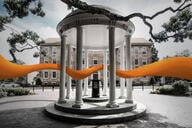You have /5 articles left.
Sign up for a free account or log in.
WASHINGTON, D.C. – Seeking to add “teeth” to the growing number of faculty votes of no confidence in presidents, the New York State Conference of the American Association of University Professors on Saturday unveiled its “Profile for 21st Century President” to serve as a template for future presidential searches.
“Under the principles of shared governance, even where primary responsibility rests with one of the other institutional components, the faculty should be afforded a meaningful participatory role in the significant decision-making processes affecting the future well-being of the institution,” reads the document, which was presented as a resolution at the annual meeting of the national AAUP.
Under the template, faculty members would have the right to:
- Define and shape all new academic and curricular initiatives, including those at global locations.
- Be represented on the governing board.
- Participate meaningfully in the selection of new presidents and provosts.
- Have full knowledge of the fiscal of the affairs of the institution.
- Review and participate in the approval of all new building and expansion plans.
- Extensions of the protections of academic freedom for all faculty members, including adjuncts, direction and dealings with faculty.
“In New York City as a whole we’ve see a vote of no confidence ‘spring,’” said Andrew Ross, professor of social and cultural analysis at New York University said, referring to votes at his institution and others at the City University of New York, where faculty have rallied against the general education system Pathways. But such votes essentially are “empty” and “needed accompanying talking points,” he said. “Rather than hand of the ‘red [AAUP policy] book’ to faculty, this is a ‘one-stop’ sheet on the faculty role in governance.”
The profile is serves as template, Ross added, so that institutions can amend it to fit their needs. AAUP members passed the resolution presented after Hank Reichman, national first vice president, reiterated that the vote signified only the recognition of the state conference’s action – not AAUP’s adoption of the template.
“The floor of the membership meeting isn’t the wisest place to make AAUP policy,” he said.
Rudy Fichtenbaum, AAUP president and professor of economics at Wright State University, said he wasn’t intimately familiar with the resolution, as it hadn’t come to the floor through the body’s resolution committee. But he said it reflected a general feeling “all over that administrations and boards are usurping the rights and responsibilities of the faculty to control curriculum” and other things within their purview.
The resolution seemed to be a way of fighting back, he said.





